
Dinosaur National Monument
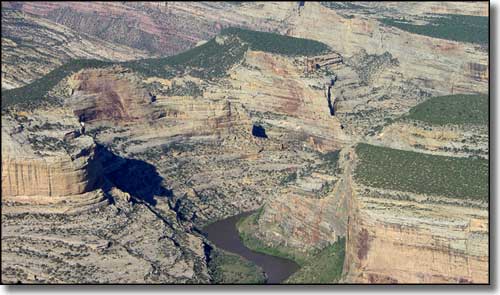
The view from Harper's Corner Overlook
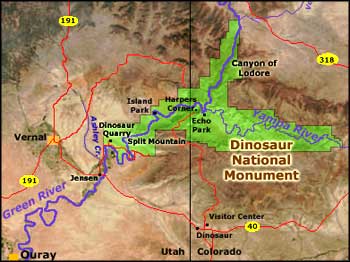
Dinosaur National Monument was established in 1915 to protect a huge deposit of dinosaur bone fossils discovered by Earl Douglass of the Carnegie Museum of Pittsburgh in 1909. Over the years, Douglass excavated many whole skeletons from the Dinosaur Quarry area and shipped them to Pittsburgh, where they are still on display. The Dinosaur Quarry area now has a visitor center that encloses a wall containing more than 1,500 fossil bones that are still in place in the rock (although the building apparently was built on unstable soils and is now closed to the public until the federal government makes a decision as to how to fix the serious structural problems, and comes up with the money to do it - in the meantime: many of the exhibits are now out in the parking lot where visitors can still hang out and get to know some of the 150 million year old skeletons).
150 million years ago, the Dinosaur Quarry area was part of a major river channel. Dinosaurs died close to the river's tributaries upstream and their decaying (and sometimes partially eaten) bodies were washed downstream through the years. Continued erosion and water flow slowly buried the bones in layers of sand and gravel, that were buried beneath layers of volcanic ash (from volcanos far to the west), that were in turn buried beneath more layers of sand and gravel deposited by later incarnations of more modern rivers. Over the millenia, the lower layers were compressed into sandstones and shales while the bones these materials surrounded were replaced molecule by molecule with other minerals (the process of "fossilization").
The Quarry bones came from 11 kinds of dinosaurs. Most of them lived during the Middle Age of Dinosaurs, about 150 million years ago. Some of them are from the Early Age of Dinosaurs, about 200 million years ago. The Later Age of Dinosaurs ended about 65 million years ago when a massive species extinction occured globally for some as yet unknown reason. None of the dinosaurs survived this, but many of the earliest mammals did, as did the very first birds.
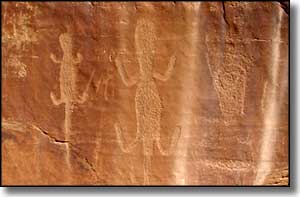
However, as fantastic as the Dinosaur Quarry area is, it isn't the only attraction in this 210,000+ acre national treasure. There are a number of mapped hiking trails into different areas of the park (including the Petroglyphs Trail that wends its' way around Split Mountain). A couple of local river companies offer one-day rafting trips through Split Mountain Canyon. And then there's the 32-mile (one way) road from the Canyon Area Visitor Center over Blue Mountain to Harper's Corner Overlook, where you can look down on the confluence of the Green and Yampa Rivers. This is wild and woolly countryside at its finest...
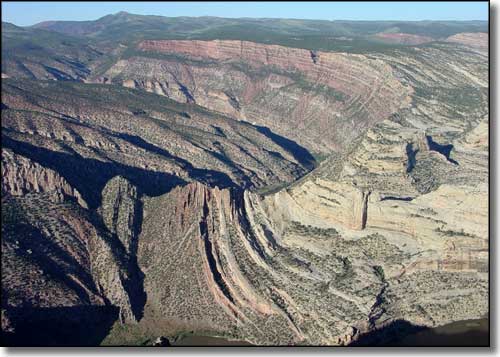
Steamboat Rock

On the Petroglyphs Trail
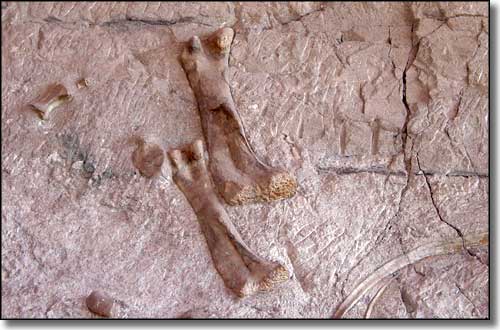
Dinosaur Bones in the Dinosaur Quarry exhibit
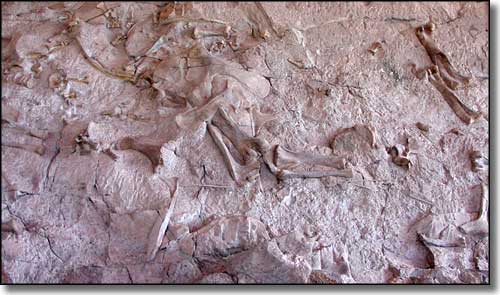
More dinosaur bones in the quarry exhibit
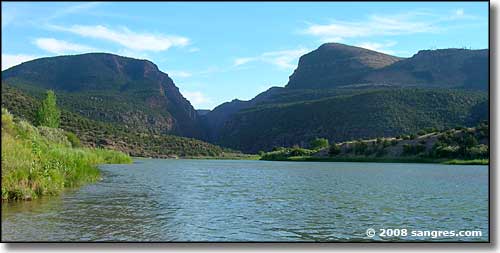
Looking toward the Gates of Lodore
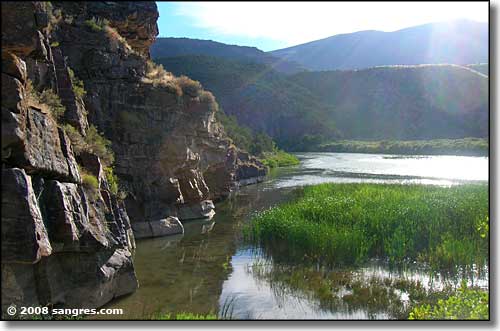
Almost to the Gates of Lodore
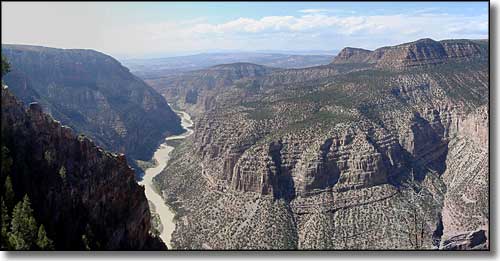
The Green River Canyon
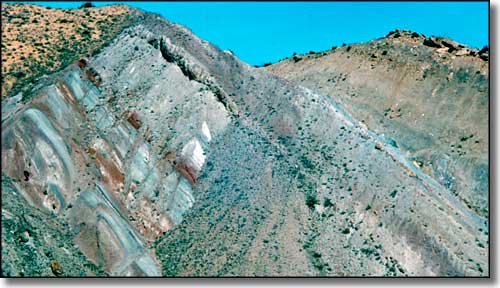
An outcropping of the Morrison Formation
